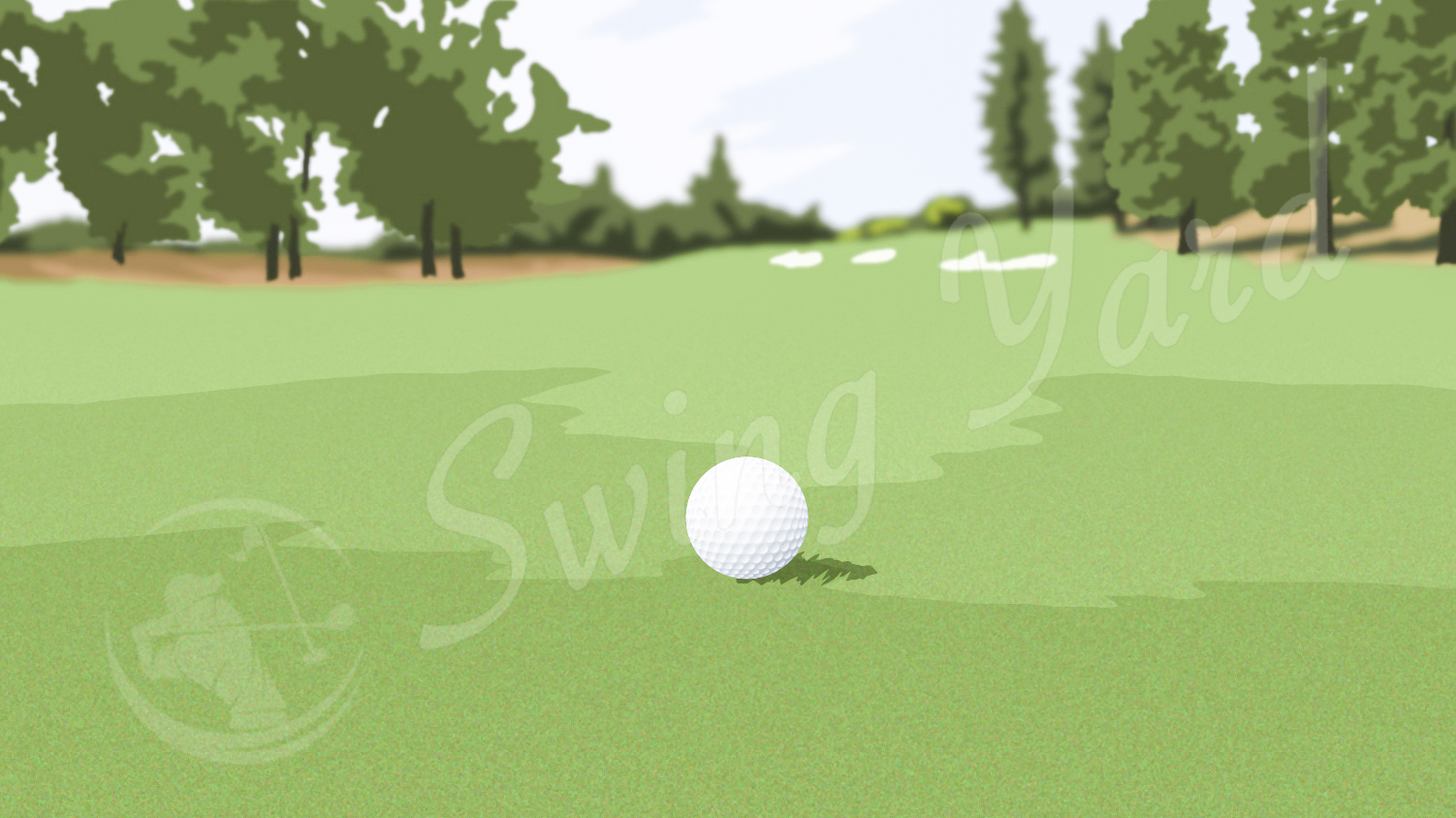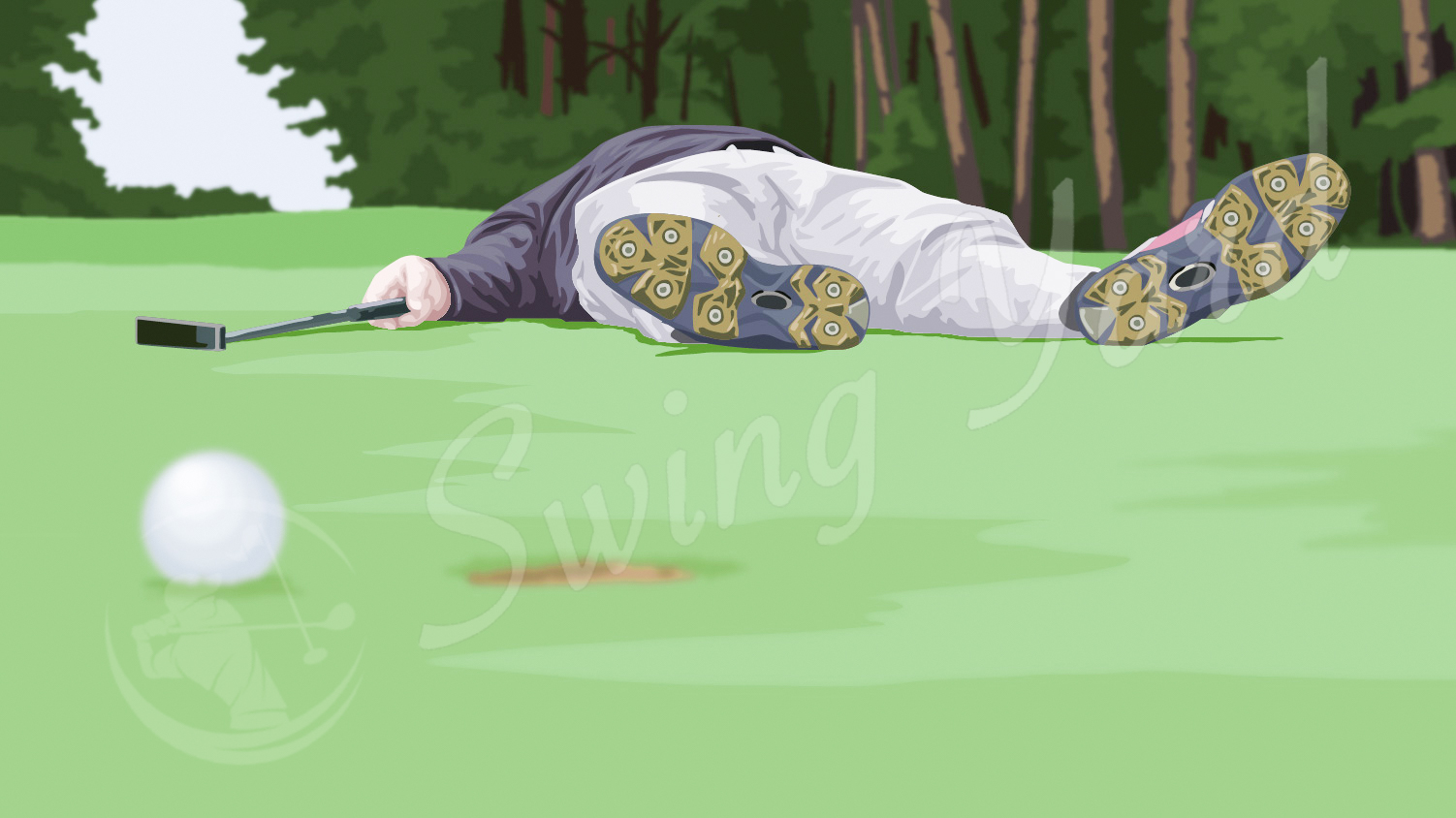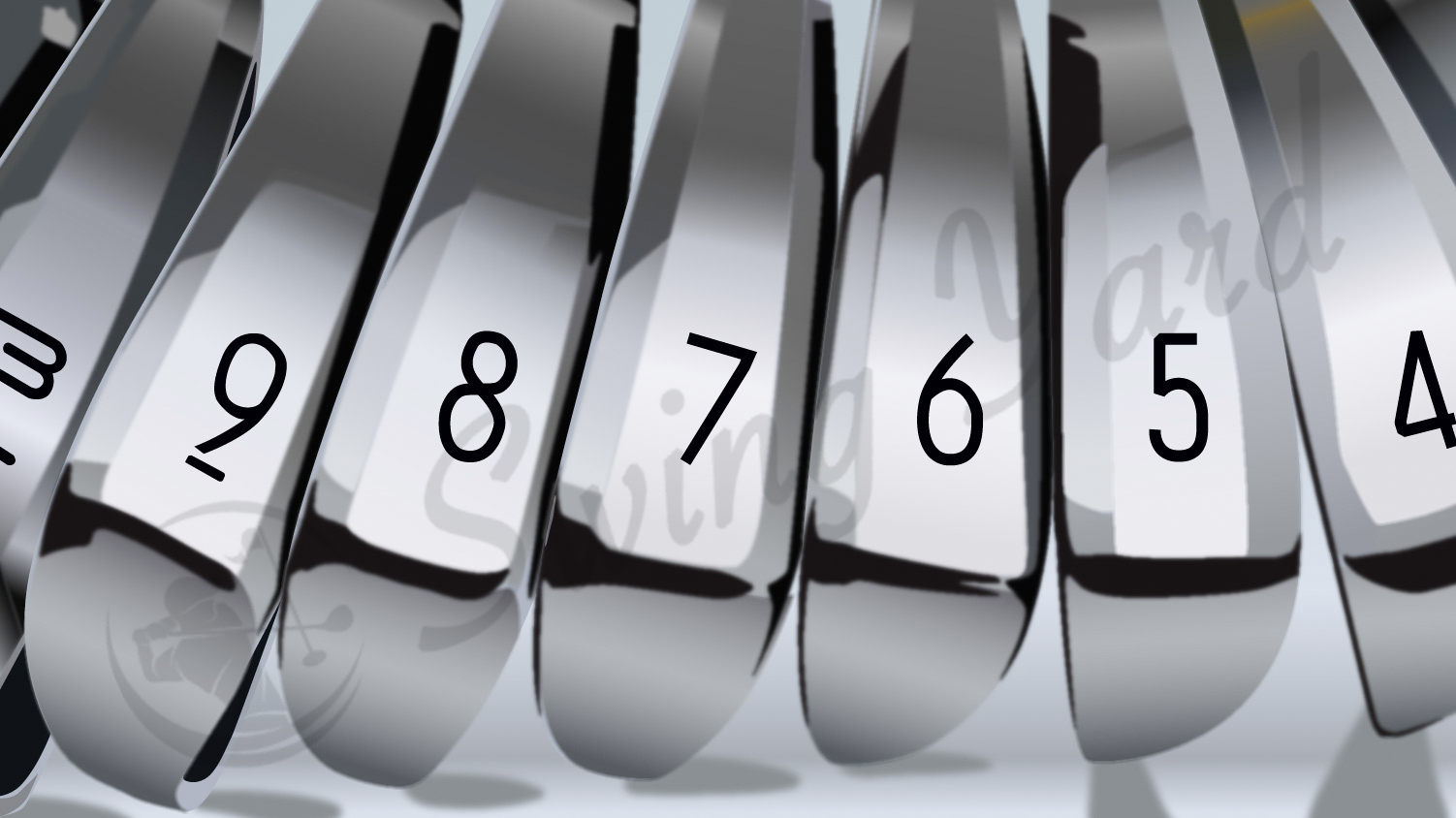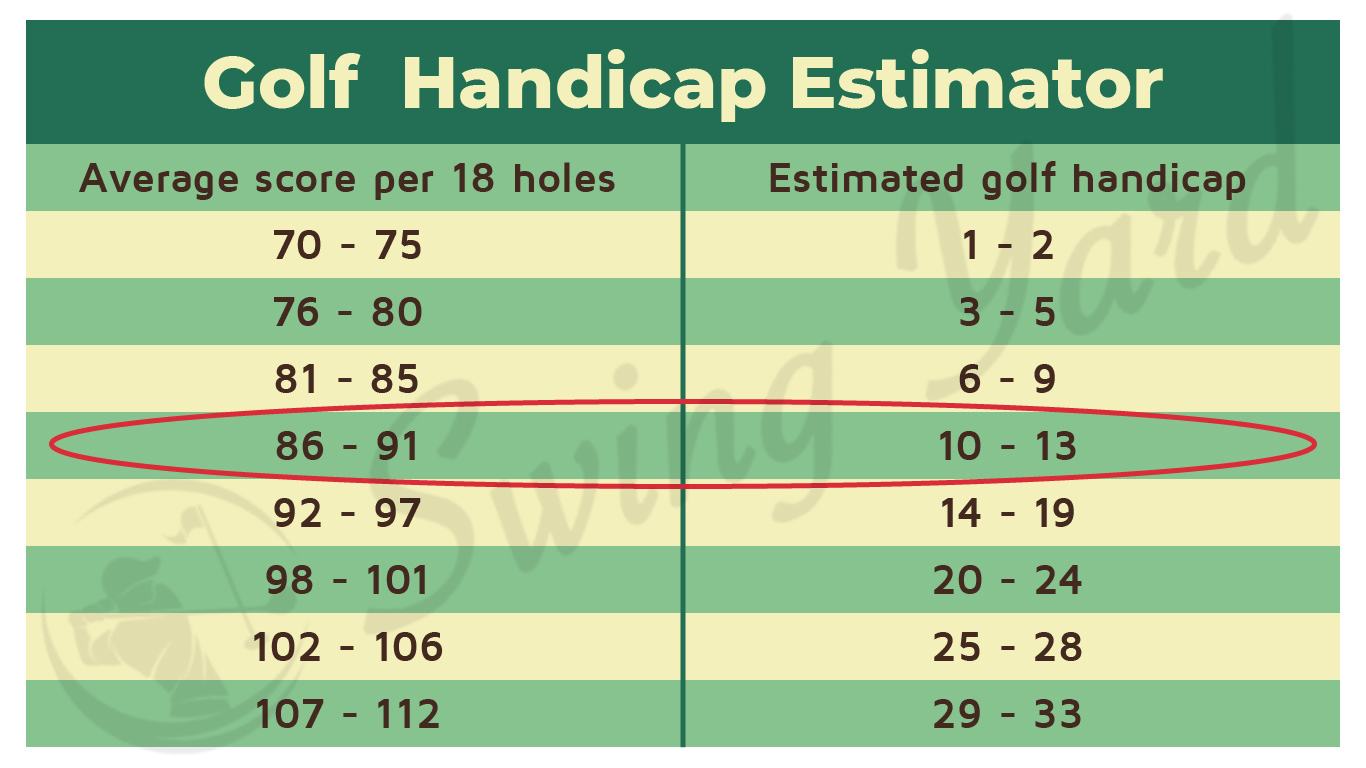How to Break 90 in Golf: Improve Your Handicap Using My Tips

By Coach Erik Schjolberg – Feb 23, 2024
Contents
Key Takeaways – How to Consistently Break 90
- Three putts need to be eliminated if you plan to break 90
- Learning to get tee shots on the fairway will make this process considerably easier
- One bad hole does not ruin the chances of breaking 90
- Getting up and down is something that you should practice much more often if you want to shoot in the 80s
Of all the scores that I have worked to shoot through the years, I found breaking 90 to be the most satisfying. When you shoot in the 100s and 90s, it feels a bit average. However, when you learn to break 90 in golf, it’s sort of a right of passage that you have done it.
Breaking 90 is a bit more of a challenge because bogey is not going to be accepted throughout the course. The good news is there is still some room for error when attempting to break 90. You won’t need to hit every shot perfectly.
If you are ready to get your golf game to the next level and start shooting these lower scores, we have a complete guide to get it done!
What Does Breaking 90 in Golf Look Like?
To shoot 90, you will have to move beyond the mindset of breaking 100 and try to bogey every hole on the golf course. This means you get an extra shot on each hole to get the golf ball into the hole. Most golfers miss the green or the fairway or make a three-putt, and it turns into a bogey.
However, if you want to learn how to break 90 in golf, experts will tell you it’s all about the pars!
The more pars you can make, the better your chance of breaking 90. Even if you make a double bogey on a hole, the par can just about make up for it and have you back on track for shooting lower than 90.
One of my favorite mental concepts to have when breaking 90 is to think of bogey as par. You know you can make a bogey on every hole and shoot a 90, so try to break that par a few times. It can be as simple as that.
Here are the skills necessary to get it done.
How To Break 90 in Golf
At this point, it’s essential to break down each part of the game to understand what is involved in breaking 90. I will get into this in a little greater detail, and you can then choose which area of your game you need to work on.
Tee Shot
I have always found that one of the best ways to learn to break 90 in golf is to master the drive. It seems like this would be important for any score you want to shoot, and it is, but for breaking 90 it can really be a game changer.
Many golfers on the cusp of breaking 90 struggle to get their driver in the fairway.
If that is the case, you may continue to play bogey golf until you get this figured out.


You must try to get the golf ball in the fairway off the tee. I recommend practicing tee shots with more than just the driver. You should have a backup option for the days when the ball won’t fly straight off the tee.
If I strike my 5 wood well, it can sometimes roll almost as far as my driver. With the 5 wood being more forgiving, I can play aggressive golf and just have one extra iron into the green. It’s a great way to gain confidence off the tee.
Of course, at some point, you will want to learn to hit the tee shots with the driver. Having a short distance to the green is important as it will increase the chance of a par.
Fairway Consistency
Fairway shots for the golfer trying to shoot in the 80s can be inconsistent. If you want to hit more greens in regulation, it’s important to work on consistency from the fairway.
I really don’t care if you can hit your 7 iron 160 yards if it doesn’t fly straight. In fact, you will be much better off with a 7 iron golf club that flies 140 yards if you know where it is going.


Many amateur golfers forget to work on alignment and setup in their fairway shots. Your golf swing is often not the problem; you simply can’t hit great shots if your setup is inconsistent and you aren’t appropriately aimed to start.
Try to work on a pre shot routine that gets you lined up correctly and ensures that you will land somewhere on or near the green.
If you almost always hit a draw or a fade, that is entirely fine; learn how to play it so you don’t end up in the bunker or thick rough. When you miss the green on your second shot, you are forced to get up and down, and that makes the game harder.
Short Game
Speaking of up and down, this is the area of the game that mid to high handicappers looking to break 90 consistently need to work on the most.
After your approach to the green, it should take no more than two shots to get the ball into the hole. If it takes three shots, you will have double bogeys and bogeys all over your scorecard.
Think about a hole where you hit a perfect drive, and your approach shot just misses the green slightly. Take out your sand wedge, chip on, and make a short putt; not only have you beat the bogey, but you have parred the hole.


Now let’s take a look at that same hole played by a golfer who does not work on their short game as intently.
This player hits their approach shot in the same location, chips on the green but leaves a 30 foot putt, and then proceeds to three putt. Instead of the four on the hole, you just turned it into a six.
It’s as simple as that. The short game allows you to save strokes at a fast rate without having to worry about an approach shot that slightly misses the green.
The more time you spend playing golf, the more important you will realize this is. Find wedges that you love and incorporate pre shot routines into your shorter shots as well.
Putting
As you saw from my last example, putting is just as important as chipping. Practice hitting putts from a variety of locations, and really try to fine tune your performance from less than six feet.
It’s just incredibly frustrating to miss a putt that is only three feet long, and it makes the entire round of golf have a different feel. If you want to shoot lower scores, making all of your putts from under 6 feet will certainly help.


Three putts are terrible, and if you have a practice green at your local course or even a carpet in your living room, you can work towards never three putting again.
When you get more confident about those putts that are less than 6 feet, you can then learn how to read greens better and get more aggressive with the longer putts. There is something quite mentally pleasing about knowing you are going to make the next putt.
Mental Game
The mental game is something you will work on for years to come. However, there are a few mental strategies that can help most golfers who are trying to break 90.
One of the most important things to me is to start to think positively even after a bad hole. If you have had a par or two and you make a triple bogey on the 7th hole, the round is not over. The putter does not need to be snapped; you simply need to move on.
Think about hitting the next shot and hitting it well.
Try to focus on one shot at a time, and you will notice that the round falls into place considerably easier.


When you get worked up, it will take your focus away from the positive that you have going on in your round. Watching golf on television should show you how these players that are used to hitting great shots sometimes make mistakes and learn to recover. Blow-up holes happen; just keep them to a minimum.
Another great way to work on the mental part of the game is to think about course management. Do you have a plan for the golf course? Do you know which holes you want to hit driver, which holes have water hazards, and which bunkers are not worth getting in?
Bad shots are one thing, but poor planning is another. Once you have played a few rounds at a course, you should have a good mental picture of what needs to be done.
Warmup and Golf Practice Plan to Break 90
Practice sessions before a round are fine, but you will want to put in a little more time than that if you want to get your average score into the 80’s. Better golfers not only work on learning to hit better shots, but they are also careful about how they prepare to play a round of golf.
Start your warmup at home and work on things like stretching and flexibility. A better golfer may go for a walk or a run when they first get up to make sure they are prepared for their day on the course.


Getting into better physical condition and making sure your body is warmed up to play can make a huge difference. Don’t stop for the hot dog at the turn either; work on having a granola bar and water and see if it helps you stay a bit more focused and tuned into your game.
Learn from PGA Tour players that it takes a reasonable amount of time and effort to play your best golf. Getting into the proper mindset and patterns both on and off the course will help, especially if you can practice at home or in the office.
Golf Equipment
Last but certainly not least is the fact that you must have good equipment if you want to play better golf. Equipment is expensive, and you don’t need to do it all at once. Perhaps update your long-game equipment one year and your putting game equipment the next.


Ultimately you want to pay attention to not just how new your equipment is, but whether or not it fits your needs as a player. When I consider what percent of golfers break 90, very few have the perfect set of clubs for their game.
Sometimes you find that a slight change in lie angle or shaft weight gives you the consistency you need to get your scores lower. We won’t tell you that a new driver is going to help you drop into the 80s, but it certainly isn’t going to hurt to have equipment matched to your skill level and body type.
FAQ – How to Break 90 Golf
Here are a few of the most commonly asked questions about how to break 90. The skills you develop when learning to break 90 are also necessary to become a scratch golfer. Keep working on your game in this way, and you will find you can shoot any score you want.
What percentage of golfers break 90?
There are about 25 to 35 percent of golfers that break 90. You will see when you spend a lot of time on a golf course that a large majority of players won’t shoot lower than 90. Of course its hard to know exactly how many golfers break 90; players are often taking mulligans or giving themselves a three footer.
What is my handicap if I shoot 90?
If you shoot 90 consistently, chances are your handicap is around 18-20. Depending on the difficulty of the course you are playing, you may notice that your handicap is lower.


Harder golf courses have high course ratings and slopes, and this impacts your handicap.
What does breaking 90 mean in golf?
Breaking 90 in golf means that you will shoot lower than 90. Anywhere in the 80s or below is considered breaking 90 golf.
Is it hard to break 90 golf?
It is hard to break 90 in golf because you must make several pars during your round. If you make a few double bogeys, you will have to catch up with an additional par or even a birdie. Although you can make a few bad swings when trying to break 90, penalty strokes and missing short putts make it challenging to keep the scores low.
How long should it take to break 90 in golf?
Some beginner players will break 90 in the first year they play. This is, of course, for those that have natural athletic ability and put quite a bit of time into each practice session. For most amateur golfers, it takes about three years to learn how to break 90 consistently. The more you play golf, the more experience you have and the easier it is to break 90.
Is 90 a good golf score?
Shooting 90 is a decent score in golf. Chances are a few balls didn’t stay in the fairway, and you may have missed a few putts that you could have made, but this is a respectable score.
Can the average golfer break 90?
Yes, the average golfer can learn how to break 90 in golf. However, it is rare to see an average golfer breaking 90 consistently. When you realize just how many shots it takes to keep that score in the correct zone, it becomes difficult to repeat round after round.
Final Thoughts – My Golf Tips to Break 90
I hope you now feel as though you have read plenty of golf tips to break 90. The idea here is to become more consistent with your game, find golf clubs that fit you, and learn to master the putting surface. When you get these things down, you can start to see those 89s and 88s pop up on the scorecard much more often.


Breaking 90 is a significant accomplishment, and it takes time, effort, and dedication. Once you do it a few times, you will start seeing scoring opportunities all over the place. Stay positive, as it will give you more confidence and take your game to an entirely new level. Before you know it, you’ll be ready to learn how to break 80!

